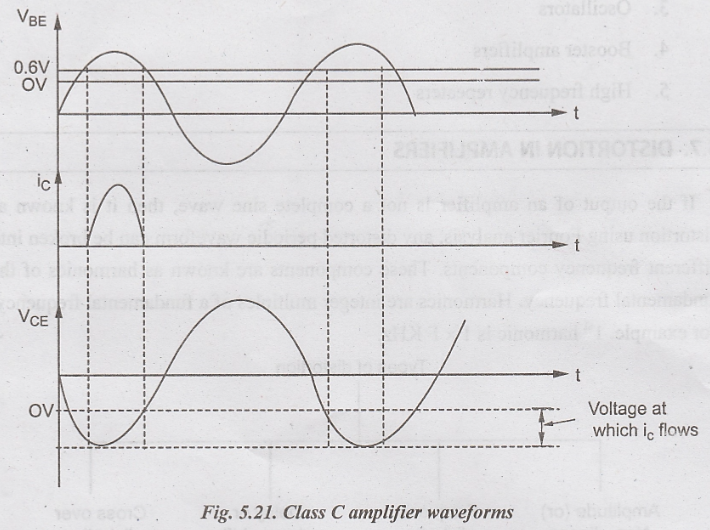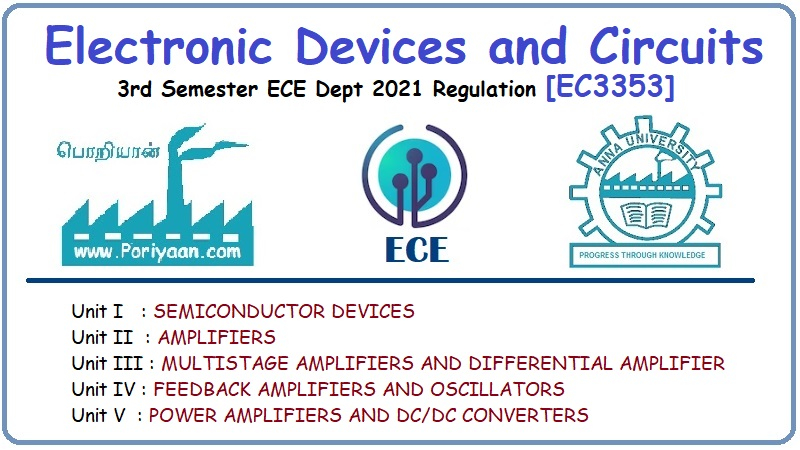Electronic Devices and Circuits: Unit V: Power Amplifiers and DC/DC Converters
Class C Amplifier
Construction, Advantages, Disadvantages, Applications
Class C amplifier are biased deep into cut off. The negative voltage at the base terminal reverse-biases the base-emitter junction of the transistor such that it will not conduct until the input signal overcomes this reverse bias.
CLASS C POWER AMPLIFIER
Class C amplifier are biased deep into cut off. Fig.5.20 shows the configuration of Class-C power amplifiers. The negative voltage at the base terminal reverse-biases the base-emitter junction of the transistor such that it will not conduct until the input signal overcomes this reverse bias.
This
occurs only for a small part of positive half cycle of input signal. IC
is in the form of pulses, so distortion occurs in Class-C amplifiers. Class C
amplifiers are suitable for audio amplifiers and used at radio frequencies.

In
Fig.5.20, a tank circuit is connected in the collector circuit of class C
amplifiers. It restores the sine waveform of the input signal at the output.
But it can't restore rectangular waveform or complex audio waveforms.
A
parallel LC oscillating circuit is used as a tank circuit which is excited by
collector current pulse and sets the circuit into self oscillations. The energy
is transferred back and forth between capacitor and inductor, thus producing
sine waveform.
Energy
loss occurs due to small effective resistance of the tank circuit. The energy
loss is maintained by cycle pulses of the tank. This is accomplished by the
collector current pulses of the tank. This is accomplished by the collector
current pulse recharging capacitor every cycle. The frequency of oscillation of
the tank circuit is given by

Practical class C amplifiers have efficiency as high as 85%.
In
Class C, the transistor conducts for less than one half cycle of input i.e
around 80° to 120° angle. This reduced conduction angle increases the
efficiency. But it causes large distortions. The transistor conducts only after
the input amplitude is greater than base emitter voltage.

Advantage
1.
Less physical size.
2.
Used in RF applications
3.
High efficiency (>95%)
4.
Low power loss in power transistors oil-on 10-
Disadvantages
1.
RF interference occurs
2.
Ideal inductor should be selected
3. Not suitable for audio applications
Applications
1.
Tuned amplifiers
2.
RF amplifiers
3.
Oscillators
4.
Booster amplifiers
5.
High frequency repeaters
Electronic Devices and Circuits: Unit V: Power Amplifiers and DC/DC Converters : Tag: : Construction, Advantages, Disadvantages, Applications - Class C Amplifier
Related Topics
Related Subjects
Electronic Devices and Circuits
EC3353 - EDC - 3rd Semester - ECE Dept - 2021 Regulation | 3rd Semester ECE Dept 2021 Regulation
